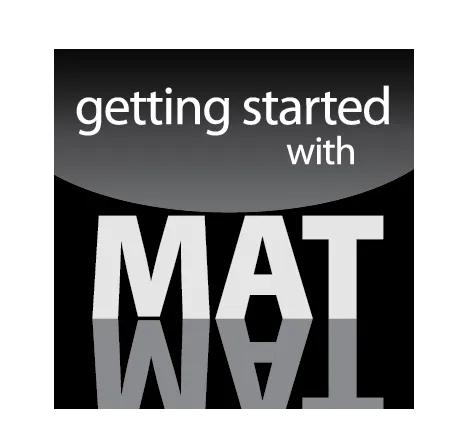Chapter 1
All About the MAT
In This Chapter



If you’re thinking about going to graduate school, you’ve probably realized by now that schools don’t let you in based on your good looks and charm. Most programs require a standardized test score so the admissions committee can see how you compare to other applicants. If you’re reading this book, the program you’re interested in probably accepts a MAT score for that very purpose.
Or you may be studying for the MAT because your employer, or prospective employer, wants to see how well you can do on it. You may be applying for financial aid that requires a MAT score. You may even be trying to get into Mensa or another high-IQ club that accepts a high MAT score as a criterion for admission. Whatever your reason for taking the MAT, it’s a good idea to learn as much as you can about the test and prepare for it intelligently before taking it.
What Is the MAT?
MAT stands for Miller Analogies Test. Its format is simple. You have 60 minutes to answer 120 questions, all of which are analogies. In each question, part of the analogy is missing. Your job is to pick the correct choice out of four possibilities to complete the analogy. Sounds simple, right? Well, it’s a bit more complicated than that. Much like Trivial Pursuit, the MAT tests your knowledge of a wide variety of subjects, ranging from astronomy to math, to vocabulary, to zoology — and everything in between.
When you realize just how many subjects the MAT potentially covers, you may be a little discouraged — after all, you’re not a walking Wikipedia, nor are you Alex Trebek or the host of any other brainiac TV trivia program (at least, probably not). But don’t worry — the MAT doesn’t require you to know everything about the subjects it covers. If you have some time to prepare, you can significantly increase your knowledge of the subjects you’re less familiar with. And you’ll be able to learn how to intelligently attack analogy questions.
What the exam looks like
As I mentioned, the MAT has 120 questions, all of which are analogies. For the purposes of the MAT, an analogy is a relationship between two pairs of terms. For example:
Big is to small as fast is to slow.
The relationship between the terms big and small is similar to the relationship between the terms fast and slow — they’re both opposites. Several types of relationships between analogy terms show up on the MAT. We discuss some of the more common types in Chapter 2.
If, like most people, you’re taking the MAT on a computer, you’ll see only one question at a time. Each question looks like the following example:
FISH : SCALES :: BEAR : _________________
(A) feathers
(B) fur
(C) spines
(D) wool
This analogy includes four terms: FISH, SCALES, BEAR, and then one of the multiple choices (a. feathers, b. fur, c. spines, d. wool).
The part of the question enclosed in parentheses (a. feathers, b. fur, c. spines, d. wool) can appear as any of the four terms. For example, the question can be rewritten as follows:
_________________ : BEAR :: SCALES : FISH
(A) feathers
(B) fur
(C) spines
(D) wool
Your job is to pick the choice that makes the first and second terms have the same relationship to the third and fourth terms, or to make the first and third terms have the same relationship as the second and fourth terms. If you pick Choice B, fur, as the missing term, then a logical analogy is formed:
A fish is covered with scales, like a bear is covered with fur.
As the MAT progresses, the questions get harder and the topics vary, but you can be sure that analogies will be the only question type you’ll encounter.
Cultural literacy
The MAT does more than test your ability to solve analogies. It also tests you on your general knowledge of a variety of topics, similar to the GRE or other standardized test but in a different question format. So preparing for the MAT also means brushing up on your knowledge in the following areas, to name just a few:









When you realize just how many subjects the MAT can cover, it can seem like you may have to take every course in a col...



